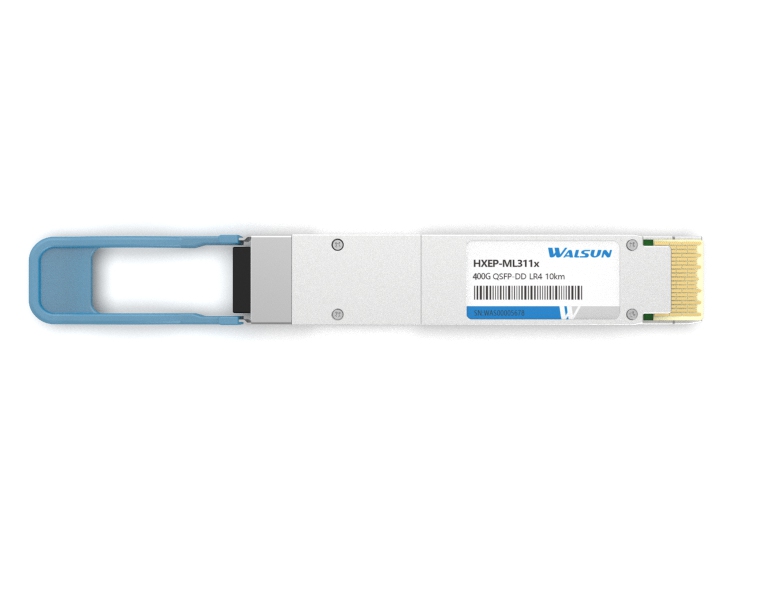

 Knowledge Base +
Knowledge Base +  2023.11.29
2023.11.29Quad Small Form-Factor Pluggable (QSFP) transceivers offer several advantages in data centers, making them a popular choice for high-speed data transmission. Here are some of the key advantages:

Higher Data Rates: QSFP transceivers support higher data rates compared to traditional transceivers. They are designed to handle speeds of 40 Gbps, 100 Gbps, and beyond. This allows for faster and more efficient data transfer within the data center.
High Port Density: QSFP modules are compact and allow for high port density on networking equipment. This is crucial in data centers where space optimization is essential. With more ports in a smaller physical space, data centers can accommodate increasing bandwidth demands without expanding their footprint.
Multiple Lanes for Parallel Transmission: QSFP transceivers use multiple lanes for parallel transmission, which enables them to achieve higher data rates. For example, a QSFP28 module can support four 25 Gbps lanes for a total data rate of 100 Gbps. This parallel architecture enhances overall performance.
Hot-Pluggable and Hot-Swappable: QSFP transceivers are hot-pluggable and hot-swappable, meaning they can be inserted or removed from a network device without shutting down the entire system. This feature simplifies maintenance and upgrades in a data center environment, reducing downtime.
Compatibility and Interoperability: QSFP transceivers are standardized, ensuring compatibility and interoperability between different networking equipment from various vendors. This standardization promotes flexibility and ease of integration in heterogeneous data center environments.
Optical and Copper Connectivity Options: QSFP transceivers support both optical and copper cable options, providing flexibility in choosing the most suitable medium for specific connectivity requirements. This adaptability is valuable in addressing diverse networking needs within a data center.
Energy Efficiency: QSFP transceivers are designed with energy efficiency in mind. The compact form factor and high port density contribute to lower power consumption per port. As data centers strive to reduce energy costs and environmental impact, the efficiency of QSFP transceivers becomes a significant advantage.
Advanced Monitoring and Diagnostics: Many QSFP transceivers come equipped with advanced monitoring and diagnostics features. These capabilities allow data center administrators to monitor the health and performance of the transceivers, aiding in proactive maintenance and troubleshooting.
In summary, QSFP transceivers offer a compelling set of advantages, including high data rates, port density, hot-swappability, compatibility, and energy efficiency. These features make them well-suited for the demanding requirements of modern data centers.
Q&A
1、What is 400G QSFP-DD optical module?
A:400G optical module refers to the optical module products whose transmission rate reaches 400Gbps. Currently the mainstream packaging type is QSFP-DD and OSFP, QSFP-DD is a high-speed optical module interface specification, the upgraded version of the QSFP interface, support for 400G high-speed transmission. Using optical fiber as the signal transmission medium, by converting electrical signals into optical signals and transmitting them in the optical fiber.
2、What are the common types of 400G QSFP-DD optical modules in the market?
A: The common 400G QSFP-DD optical modules in the market have the following types in the market: QSFP-DD SR8, QSFP-DD DR4, QSFP-DD FR4, QSFP-DD FR8, QSFP-DD LR4, QSFP-DD LR8 and QSFP-DD ER8 optical modules.
3、What is the difference between QSFP-DD and OSFP optical modules?
A: QSFP-DD is smaller in size and more suitable for data center applications, which is the mainstream development direction, while OSFP is slightly larger in package size and consumes more power, which is more suitable for telecom applications. In contrast, the QSFP-DD interface provides four-channel small size and double the port density, OSFP for eight high-speed electrical channels, the current point of view of the QSFP-DD good compatibility and perfect support for 400G is still the preferred choice of the market.
4、What is the transmission distance of 400G QSFP-DD optical module?
A: The transmission distance of 400G QSFP-DD module depends on the type of fiber used and the specifications of the module. Generally speaking, it can support a transmission distance of 100m-40km.
5、What are the application scenarios of Walsun 400G QSFP-DD optical modules?
A: 400G QSFP-DD optical modules are usually used in high-bandwidth requirement scenarios such as internal connection in data centers, interconnection of data centers, and connection between network devices.
Subscribe to the newsletter
for all the latest updates.
2-5# Building, Tongfuyu Industrial Zone, Aiqun Road, Shiyan Street, Baoan District, Shenzhen. China
